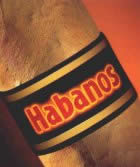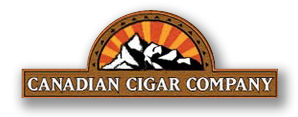|
 Welcome to our secure store. Welcome to our secure store.
We sell only the finest Cuban cigars and ship around the world!
Should you have any questions, feel free to call us toll free at 1-888-830-6162 so we can talk cigars.
Or if you prefer, you can mail us at info@canadiancigar.com
Enjoy your Cuban cigars...
Glossary of Cigar Terms
Band - The ring of paper with the name of the cigar brand, wrapped near the closed head of the cigar and usually held on with a vegetable based glue.
Binder - The portion of a tobacco leaf that is rolled around the filler to hold it together.
Blend - A mixture of different types of cigar leaf tobacco, including up to four types of filler leaves, a binder and an outer wrapper.
Bloom - A fine white powder that forms on the wrapper of the cigar caused by the oils that exude from the tobacco. It can be gently brushed off with a small camel hairbrush, though there is no need to do this. Bloom indicates the cigar is alive, maturing as it should inside a well-maintained humidor. Bloom should not be confused with mold. Mold is a bluish-green and stains the wrapper. Mold usually indicates a humidor is too warm or has excessive levels of humidity.
Blue mold - Blue mold is a damaging fungus that forms on the tobacco leaf and can ruin the crop. Blue mold is a big problem when there's a lot of dampness or rain.
Bunch - The mix of filler and binder leaves before they are rolled into a wrapper.
Bundle - A method of packaging cigars using cellophane as opposed to a box. A bundle usually contains from 25 to 50 cigars and are less expensive than boxed cigars. Bundled cigars usually contain the seconds from premium brands.
Cap - A circular piece of wrapper leaf cigar tobacco that is placed at the head of the cigar to secure the wrapper. Cuban cigar caps have a distinctive three to four-layer circular look that distinguishes them from cheaper counterfeit look-a-likes.
Cutter - An instrument with a razor sharp blade used to remove the cap or flag from both machine made and hand made cigars.
Draw - The amount of air that gets pulled through a lighted cigar. It can be too easy (hot) or too tight (plugged).
Filler - The leaves of tobacco at the core of the cigar that provide a significant portion of its taste.
Flag - An alternative to a cap that involves shaping the wrapper leaf at the head of the cigar so that it secures the wrapper in place. Sometimes a flag can be tied off in a pigtail or curly head.
Foot - The open end of the cigar you light.
Hand-rolled - A cigar made entirely by hand, usually constructed with a high quality wrapper and long filler and binder as opposed to cut filler used in machine made and cigar seconds.
Head - the closed end of the cigar, or the end you cut and smoke.
Humidor - An entire room, or a box, that's designed to preserve and promote the proper storing of fragile cigars. An optimum humidity and temperature level in a humidor is 70/70, or 70 percent humidity and 70 degrees Fahrenheit (21 degrees Celsius).
Ligero - One of the three basic types of filler tobacco. The name means ``light'' in Spanish.
Long filler - A term used to designate filler tobacco that runs the length of the body of the cigar, as opposed chopped up pieces know as ``cut-filler.''
Machine made - A term that refers to cigars made entirely by machine and less expensive cigar tobacco.
Mold - The wooden form used by cigar rollers to give shape to a finished bunch of cigar tobacco. - Ring gauge - A standard industry measurement for the diameter of a cigar in 64ths of an inch. A 50-ring gauge cigar is 50/64ths of an inch thick.
- Seco - One of three basic types of filler tobacco. The name means ``dry'' in Spanish.
- Shade grown - Prime tobacco leaf grown under cheesecloth tenting called a ``tapado'' to produce a thin, elastic tobacco leaf that is most often used in premium cigars.
Size - The classic Cuban cigar sizes are as follows: Size | Length | Ring | Belicoso
| 5 1/2 inches | 52 | Churchill
| 7 inches | 47 | Corona
| 5 1/2 inches | 52 | Corona Gorda
| 5 1/4 inches | 46 | Culberas
| 5 3/4 inches | 39 | Demi Tasse
| 4 inches | 30 | Double Corona
| 7 1/2 inches | 49 | Especial
| 7 1/2 inches | 38 | Gran Corona
| 9 1/4 inches | 47 | Hermoso
| 5 inches | 48 | Long Panetela
| 7 inches | 36 | Lonsdale
| 6 1/2 inches | 42 | Panetala
| 4 1/2 inches | 26 | Petit Corona
| 5 inches | 42 | Pyramid/Torpedo
| 6 1/2 inches | 52 | Robusto
| 5 inches | 50 | Tres Petit Corona | 4 1/2 inches | 40 |
Picking a cigar: Pick the color wrapper you prefer, dark or light. Gently feel the cigar between your fingers (don't roll it because that could cause the wrapper to crack) to see if it's too moist or too dry. Inspect the construction of the cigar to insure there are no cracks in the wrapper and the cap is in good condition. While some cigar smokers like to hold the cigar up to their nose and sniff the product, others find this distasteful when they see someone put a cigar up to their nose and then put it back in the box. If you must smell the tobacco, just hold your nose 12 inches over the box of opened cigars and take a breath, this should be sufficient for you to determine the bouquet of the cigar and it will cause fewer problems for other customers. Cutting a cigar:
Many feel that using a guillotine type cigar cutter or cigar scissors is the most effective way to cut a premium cigar. Be careful not to cut past the cap of the cigar. Besides a guillotine type cutter, some smokers use a sharp knife; a cigar punch, a V cutter and some even use their teeth. Perhaps the most difficult cutting instrument to use is the cigar scissors, which requires practice, a steady hand and a good eye.
Lighting a cigar:
The foot, or tip of the cigar should be started by using a long wooden cigar match or butane lighter. Avoid candles, paper matches, a stove and lighters that use lighter fluid (naphtha) because the chemicals and odors can affect the taste of the tobacco. When using a match, wait until the sulphur burns off before lighting the cigar. The ideal instrument is a butane lighter.
Start lighting a cigar by holding it at a 45-degree angle over the flame, about 3-4 inches from the tip of the cigar (depending on the height of the flame you're using) and rotate the cigar until the foot begins to ignite. Never letting the flame touch the cigar, slowly puff on the cigar while rotating it around the flame.
Take a look at the foot and make sure the cigar is burning evenly. To insure a proper light you can gently blow on the foot to insure a complete lighting. Once the cigar is lighted let it sit for a minute, as the short delay will allow the freshly lighted cigar to stabilize.
Letting the ash burn:
Most premium handmade cigars (those costing from $3 to $30 each) will hold a very long ash before falling off. The ash on cheaper cigars tends to flake easily and fall off more frequently. Properly grown and maintained cigar tobacco will have a whiter ash than the sometimes very grey ash produced on lower quality cigars. While some smokers like to see how long the ash on a cigar can grow before falling off by itself--keep in mind when in a public place where cigar smoking is permitted--or at a party, you don't want cigar ashes to fall on your clothes, a floor, or a rug. It's always wise as you see the ash starting to gain length to gently tap it off.
Keeping the cigar band on or off:
It's mostly a personal decision when opting whether to take a cigar band off or leave it on while smoking ones favorite cigar. Some say that leaving the band on promotes conversation among cigar smokers, while others say it's a showy thing to do that shows a lack of proper cigar etiquette. If you do decide to remove the cigar band make sure you let the cigar heat up before taking it off, as the heat from the cigar will help loosen the glue that holds the band on. Remember too, that taking the band off some brands of Cuban cigars (even after heating), like the Montecristo, is very difficult and can result in damage to the cigar wrapper.
Relighting and putting a cigar out:
Perhaps one of the most overlooked aspects of cigar smoking is relighting an extinguished cigar. On the subject of relighting, cigars by nature will go out if not puffed on every few minutes, so relighting a fresh cigar isn't a problem. While some contend you can save a partially smoked cigar for more than 24 hours, it's best to avoid relighting a cigar that hasn't been smoked in more than 2 hours. When relighting a cigar hold the flame in front of the foot and blow out to help expel any old gases or ash that may have become trapped in the cigar. After that step, follow standard lighting procedures. To extinguish a cigar, just let it go out by itself in an ashtray. Stubbing-out a cigar produces a stale odor that can linger in a room. Once you're sure your cigar is out dispose of it in a safe manner.
All prices shown for International shopping pages are US funds.
Local Alberta residents can shop here: https://www.canadiancigar.com/shop/indexAB.html
Please note due to Federal Tobacco Act regulations we are NOT permitted to ship to Canadian consumers in other Provinces or Territories.
Canadian Cigar Company Ltd All rights reserved 2017 Calgary, Alberta, Canada
Thank you for your interest in our products and service, we appreciate it.
|
 Welcome to our secure store.
Welcome to our secure store. 
